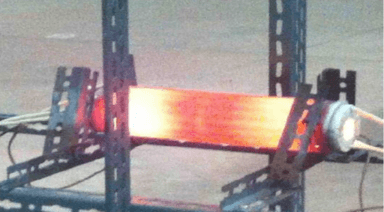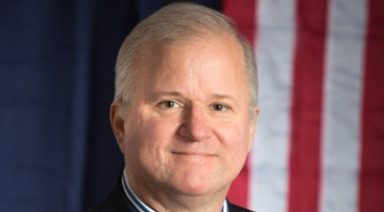SpaceX Falcon 9 Rocket Explosion

Elon Musk, founder and CEO of Tesla and SpaceX, is actively preparing to send humans and cargo to Mars by 2024, a “full decade before NASA projects can complete that task.” Musk is confident he can send the first unmanned cargo load to the red planet by 2018. This is consistent with his goal of making travel to Mars an absolute real possibility for individuals here on Earth who are interested and excited about the potential of setting up a human colony on Mars.
In preparation to reach his lofty aspirations, Musk’s unmanned SpaceX Falcon 9 rocket was all set to take supplies to the International Space Station on September 1, 2016. It was also going to collect data to use for future Mars missions.
The SpaceX Falcon 9 was sitting in the dock that day at Cape Canaveral undergoing a routine filling operation. The engines were off and there was no apparent heat source. Suddenly, the spaceship exploded. Fire broke out and, of course, the launch was canceled. Elon Musk tweeted that the Falcon 9 rocket explosion was “turning out to be the most difficult and complex failure we have ever had in 14 years.”
A video was released shortly after the explosion. UFO aficionados pointed out a strange object in the sky that is seen just seconds before the explosion. When asked if he thought something hit the rocket just before it exploded, as shown in some YouTube videos, Musk replied, “We have not ruled that out.”
Is this evidence of a greater force trying to prevent the masses from having access to space travel? Did the explosion have something to do with the $200 million satellite on board owned by Facebook’s Mark Zuckerberg?
Three months before the explosion Musk met with U.S. Secretary of Defense Ash Carter. The meeting was confidential, held behind closed doors at the Pentagon. TIME reported that Carter is interested in innovations stemming from the tech community. However, Space X Falcon 9’s impending launch may have been on their agenda for discussion, as well, but all we know of the meeting is a joke tweeted by Musk saying “something about a flying metal suit…”
The SpaceX Falcon 9: History and Recent Explosion
In September 2012, the SpaceX Falcon 9 made its first successful trip to the International Space Station. Since then, it has made multiple trips back and forth, taking cargo to the station on behalf of NASA. The goal is to eventually transport volunteer civilians to Mars to set up a permanent colony. The project seemed to be on track until the explosion on September 1, 2016.
The entire explosion was caught on video. If you watch the video, you’ll notice an unidentified flying object (UFO) in the upper right-hand area of the sky. It travels to the explosion site and then disappears. When viewed in slow-motion, the object is even more pronounced.
Initially, some claimed it was just birds by many online commentators. That theory was quickly debunked; if you look closely at the video, there is no flock and birds can’t fly at the speed at which the object was seen moving across the sky. Instead, there is clearly a cylindrical shaped object that is cloaked in a reflective material and traveling at high speed.
The explosion also destroyed $200 million “revolutionary” Amos-6 satellite owned by Facebook founder Mark Zuckerberg. Zuckerberg’s goal was to use the satellite to provide free internet service to more than 14 African nations.
He expressed his “deep disappointment” over the loss of the satellite.
Were UFOs and Extraterrestrials Involved in the Explosion?
Some witnesses and UFO observers believe the launch of the SpaceX Falcon 9 was sabotaged by a UFO on a mission to prevent plans for further space travel and the colonization of Mars.
One witness, wanting to remain anonymous, claimed to be a welder at NASA. He witnessed an oblong object in the sky about 20 minutes before the explosion. Because he is not allowed to have his phone at work, he was unable to get any photos or videos of the object.
He described the object as having three white lights in the center of it. It was visible for approximately 20 seconds, then it disappeared.
Elon Musk himself added fuel to the fire when he also reported via Twitter that even though all engines were turned off during the fueling process, there was a “quieter bang sound a few seconds before” the explosion. He believes it came “from a rocket or something else.”
At the end of September 2016, no answers had been found. It was speculated that there could be no more launches until at least 2017. Meanwhile, many questioned whether or not this would set back Musk’s 2024 goal of sending people to Mars.
Update: What Happened?
The investigation into this explosion is ongoing. Musk is considering all evidence. He has not given up the idea that there could have been some type of sabotage. According to his spokesperson and the president of SpaceX, Musk is not ruling anything out, but he is focusing on defects in the helium fueling process.
As of October 28, 2016, the cause of the explosion had still not definitively been identified. The focus is still on the failure of the helium tanks. But, SpaceX admits, it still has not discovered the root cause of the explosion and fire.
More Time and Information Needed
Interference by a UFO cannot be ruled out. Meetings between Musk and the Department of Defense remain secret. Still, Musk forges onward, committed to transporting colonists to Mars by 2024.
Clearly, we need more information. There is simply not enough public information for anyone to make definitive conclusions about what happened on the Cape Canaveral launch pad on September 1, 2016. Learn more about The New NASA Connection to private sector space exploration.
Want more like this article?
Don’t miss Deep Space on Gaia for more on the long and hidden history of Earth’s secret space program.
Gaia's Top 10 Seeking Truth Shows You Don't Want to Miss

You know there’s more than what we’ve been told by the government, media, and society’s dominant narrative; a clandestine cabal of the ruling elite, alternative historical narratives, an undisclosed extraterrestrial presence, and esoteric pathways to higher states of consciousness. Here are some of our latest picks to give you fresh insight into your quest to seek the truth.
1. Disclosure with Dr. Steven Greer
In conversations with Billy Carson, Dr. Steven Greer discusses the history of the UFO and Disclosure movements, as well as his personal experiences leading to his development of the CE5 (Close Encounters of the 5th Kind) protocols, a groundbreaking process that leverages advanced consciousness techniques to facilitate unmitigated human contact with ETs.
We explore Dr. Greer’s research into consciousness and technology as he shares his inspirational vision of our future as members of an intergalactic civilization.




































